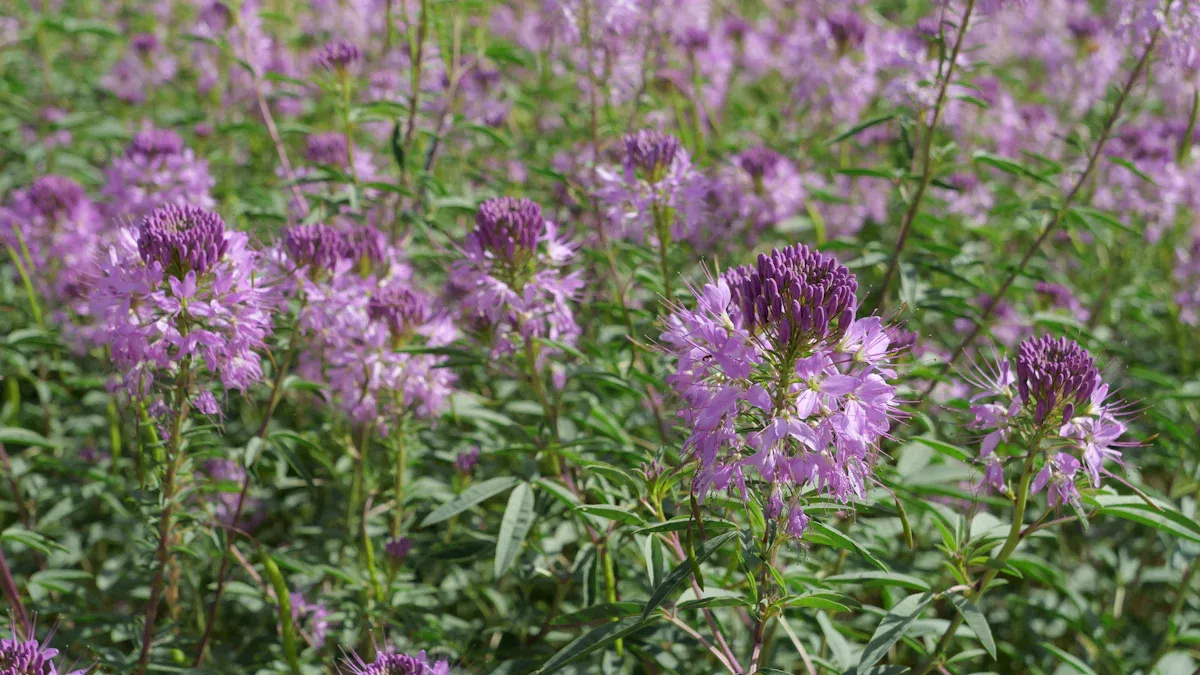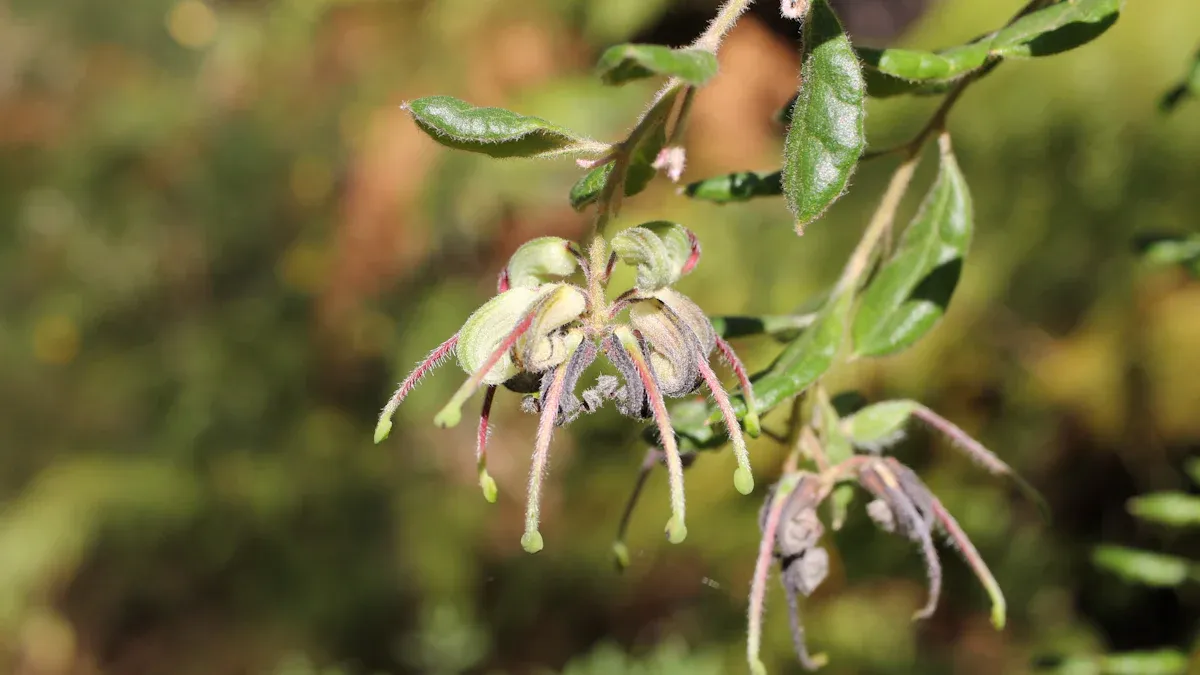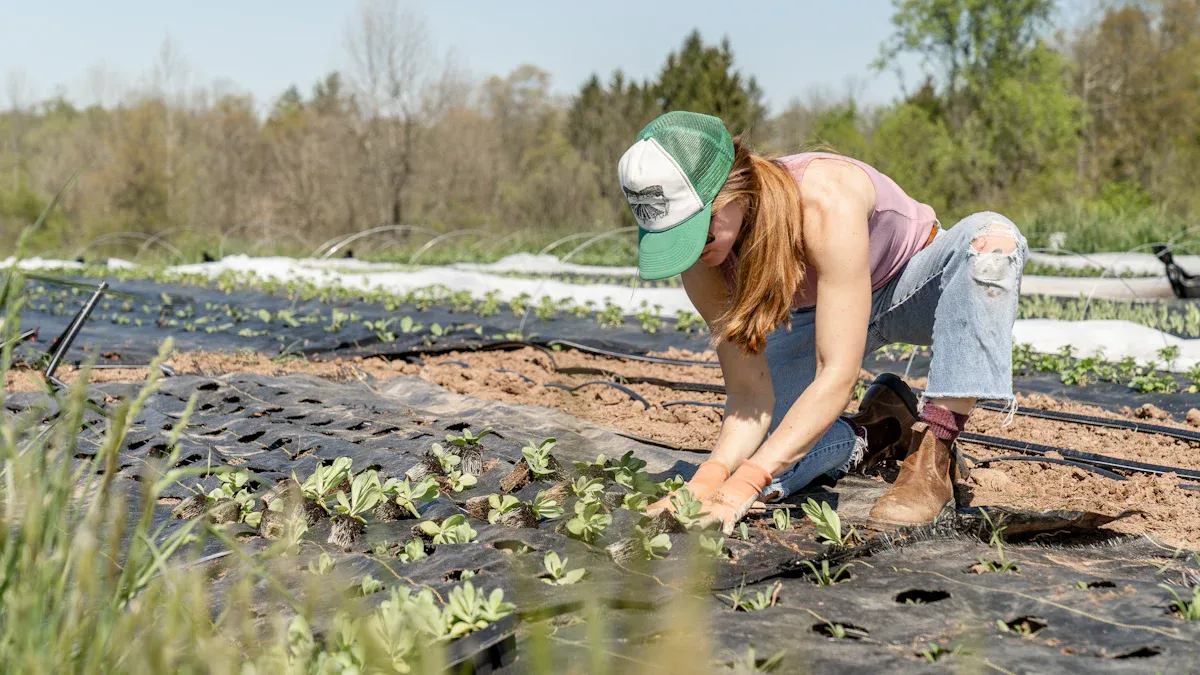
Are you aware that nearly 20% of the world’s agricultural land suffers from soil salinity? This alarming statistic highlights the urgent need for innovative growing methods. Salt marsh gardening offers a unique solution. By utilizing salt-tolerant plants, you can transform challenging conditions into productive spaces. Imagine cultivating a thriving garden where traditional crops struggle. Embracing this approach not only benefits you but also supports the ecosystem. Let’s explore how salt marsh gardening paves the way for sustainable growing.
Key Takeaways
Salt marsh gardening utilizes salt-tolerant plants to thrive in saline conditions, transforming unproductive land into fruitful gardens.
This gardening method supports biodiversity by creating habitats for various species, enhancing ecosystem health and resilience.
Growing salt-tolerant vegetables like salicornia and sea fennel not only diversifies your diet but also contributes to food security in saline-prone areas.
Implementing sustainable practices in salt marsh gardening, such as using organic amendments, improves soil health and supports local ecosystems.
By embracing salt marsh gardening, you play a vital role in combating climate change and promoting ecological restoration.
Advantages of Salt Marsh Gardening

Salt marsh gardening offers numerous advantages that make it a compelling choice for sustainable growing. Let’s dive into the ecological benefits and resource efficiency that come with this innovative approach.
Ecological Benefits
One of the most significant advantages of salt marsh gardening is its positive impact on the environment. These gardens support diverse ecosystems and help combat salinization, which affects many agricultural areas. By planting salt-tolerant species, you create habitats that benefit both plants and animals.
Here are some key ecological benefits:
Biodiversity Support: Salt marshes serve as crucial habitats for various plant and animal communities. They attract a range of species, from migratory birds to unique aquatic life. This diversity enhances the overall health of the ecosystem.
Carbon Sequestration: Salt marshes sequester carbon at a rate ten times greater than mature tropical forests. The rapid growth of plants in these areas captures more carbon through photosynthesis. Additionally, anaerobic soil conditions slow down the decomposition of carbon, keeping it trapped longer. This means that by engaging in salt marsh gardening, you contribute to climate change mitigation.
Mutualistic Relationships: Research shows that mussels and marsh grasses have a beneficial relationship. Mussels improve water storage and reduce soil salinity around grass roots. This helps marshes recover from drought in less than a decade, compared to over a century without mussels.
Evidence Description | Findings | Impact |
|---|---|---|
Mutualistic relationship between mussels and marsh grasses | Mussels improve water storage and reduce soil salinity around grass roots | Helps marshes recover from drought in less than a decade, compared to over a century without mussels |
Resource Efficiency
Salt marsh gardening also excels in resource efficiency. You can grow food in areas that might otherwise be unproductive due to high salinity. This approach not only maximizes land use but also minimizes the need for chemical fertilizers and pesticides. Here’s how:
Water Conservation: Salt marsh plants are adapted to thrive in saline conditions, requiring less freshwater. This makes them ideal for regions facing water scarcity.
Low Maintenance: Once established, salt marsh gardens require less upkeep than traditional gardens. The resilience of salt-tolerant plants means they can withstand harsh conditions, reducing the need for constant care.
Nature-Based Solutions: By utilizing salt marsh gardening, you contribute to nature-based solutions that enhance local ecosystems. These gardens can help stabilize shorelines, reduce erosion, and improve water quality.
Ecological Impact of Salt Marshes
Salt marshes play a vital role in supporting biodiversity and enhancing climate resilience. These unique ecosystems adapt to environmental changes and provide essential services that benefit both wildlife and coastal communities.
Biodiversity Support
Healthy salt marshes are home to a rich variety of wildlife. They provide habitats for numerous species, including the endangered salt marsh sparrow and various migratory birds. In fact, salt marshes serve as critical stopover points for birds during migration, offering abundant food sources like fish and crustaceans. This diversity is crucial for maintaining the overall health of coastal ecosystems.
Salt marshes also support over 75% of commercially important marine species, such as shrimp, crabs, and finfish. These species rely on salt marshes for breeding and nursery grounds. By protecting these habitats, you help sustain local fisheries and the economies that depend on them. The intricate relationships among species in these marshes create a balanced ecosystem that thrives on mutual support.
Did you know? Salt marshes filter runoff and excess nutrients, improving water quality. This natural filtration helps protect coastal waters from pollution, making these ecosystems even more valuable.
Climate Resilience
Salt marshes are nature’s buffer against climate change. They absorb excess water during storm surges, reducing flooding impacts on coastal areas. This ability to act as a buffer is crucial, especially as climate change leads to more frequent and severe storms.
Here are some key ways salt marshes contribute to climate resilience:
Storm Surge Attenuation: Salt marshes can reduce storm surge height by 1.7 to 25 cm per kilometer of marsh. This means they help protect your home and community from flooding.
Wave Energy Dissipation: These ecosystems effectively dissipate wave energy, which is especially important during storms. This reduces the risk of erosion and damage to coastal infrastructure.
Carbon Sequestration: Salt marsh soils store carbon, helping to mitigate climate change. They maintain soil elevation and support the growth of salt-tolerant plants, which further enhances their ability to capture carbon.
As sea levels rise, salt marshes respond through complex bio-physical feedbacks. They can shift from high marsh zones to flood- and salt-tolerant low marsh species, stabilizing their elevation relative to rising waters. This adaptability ensures that they continue to provide essential services, such as habitat for wildlife and protection against coastal erosion.
By embracing salt marsh gardening, you not only contribute to the health of these ecosystems but also support their vital role in climate resilience and biodiversity.
Vegetables to Grow on Salt Marshes
When it comes to salt marsh gardening, you have some exciting options for vegetables that thrive in saline conditions. These salt-tolerant crops not only adapt well to challenging environments but also offer unique flavors and nutritional benefits. Let’s explore some of the best vegetables to grow on salt marshes.
Salt-Tolerant Options
Here’s a list of some fantastic salt-tolerant vegetables you can cultivate in your salt marsh garden:
Vegetable Name | Description |
|---|---|
Salicornia europaea | Also known as samphire or sea beans, cultivated for food. |
Ice plant | A halophyte cultivated alongside traditional vegetables. |
Sea lavender | Another halophyte grown in salt marsh conditions. |
Sea fennel | Grows in saline environments, used in culinary dishes. |
Sea asparagus | Known scientifically as Salicornia bigelovii, thrives in salty conditions. |
Sea purslane | Sesuvium portulacastrum, another halophyte studied for growth in saline soils. |
Saltwort | Batis maritima, a salt-loving plant with culinary uses. |
These vegetables not only survive but flourish in salty soil, making them perfect for areas where traditional crops might fail. By growing these salt-tolerant options, you can contribute to food security in saline-prone regions. They help mitigate the negative impacts of salinity on crop yield and quality, ensuring that you have a reliable source of fresh produce.
Innovative Uses
Salt marsh-grown vegetables are gaining popularity in culinary circles for their unique flavors and health benefits. Here are some innovative ways chefs and home cooks are using these crops:
Chef/Restaurant | Culinary Use | Description |
|---|---|---|
Brett Common | Garnish and Ingredient | Uses Salicornia as a garnish on summer tomato dishes and bakes it into sourdough bread. |
James London | Dock-to-table seafood pairing | Emphasizes the local flavor of Salicornia, enhancing the seafood dishes at Chubby Fish. |
General Use | Fresh and Cooked Dishes | Salicornia can be eaten raw or cooked, excelling in salads and shellfish dishes. |
General Use | Seasoning and Beverages | Used as a seasoning in various dishes and featured in both alcoholic and non-alcoholic drinks. |
These innovative uses highlight the versatility of salt-tolerant crops. You can enjoy them in fresh salads, as a seasoning, or even in beverages. Plus, they often have higher nutritional content compared to conventional crops. For instance, studies show that salicornia has increased polyphenols and antioxidants, which can boost your health.
Incorporating these vegetables into your diet not only diversifies your meals but also supports sustainable practices. As more people recognize the benefits of salt marsh gardening, the demand for these unique crops continues to grow. By embracing this trend, you can be part of a movement that values local, sustainable food sources.
Crops You Can Grow on Salt Marshes
When you think about salt marsh gardening, consider the variety of crops you can grow. These include both native plant species and edible options that thrive in saline conditions. Let’s explore what you can cultivate in your salt marsh garden.
Native Plant Species
Native plants play a crucial role in salt marsh ecosystems. They help stabilize the soil and prevent erosion, which is vital for maintaining healthy coastal environments. Here are some native species you might find:
Plant Species | Family | Description and Ecological Role |
|---|---|---|
Salicornia pacifica | Chenopodiaceae | This dominant species provides habitat and food for the Western pygmy blue butterfly. |
Extriplex californica | Chenopodiaceae | Attracts coots and rabbits, possibly serving as a larval host for the Western pygmy blue butterfly. |
Distichlis spicata | Poaceae | Survives salty conditions and was used by Native California Indians for salt. It also serves as a larval host for the wandering skipper butterfly. |
Frankenia salina | Frankeniaceae | A nectar plant for the rare wandering skipper butterfly, confined to salt marshes. |
Jaumea carnosa | Asteraceae | Colonizes mid to upper salt marsh elevations, contributing to the ecosystem structure. |
Cuscuta salina | Convolvulaceae | This parasitic plant derives nutrients from host plants, playing a role in the salt marsh food web. |
These native plants not only enhance biodiversity but also improve soil stability. Their roots hold the soil in place, reducing runoff and protecting against erosion.
Edible Options
You can also grow a variety of edible crops in your salt marsh garden. These crops thrive in salty conditions and offer unique flavors. Here are some options to consider:
Purslane (Portulaca oleracea)
Marine fennel (Crithmum maritimum)
Ice plants (Mesembryanthemum cristallinum)
Mediterranean saltworts (Salsola soda)
Glassworts (Salicornia and Sarcocornia)
These crops not only adapt well to saline environments but also contribute to food security in regions affected by salinity. For instance, salicornia, also known as glasswort, is gaining popularity for its crunchy texture and salty flavor. It’s perfect for salads or as a garnish for seafood dishes.
As you explore salt marsh gardening, remember that these crops can yield nutritious food while supporting the ecosystem. By choosing to grow native plants and salt-tolerant crops, you play a part in promoting sustainable practices and enhancing local biodiversity.
Practical Gardening Methods in Salt Marshes

When you start your salt marsh garden, proper soil preparation and effective water management are key. These practices not only help your plants thrive but also support the surrounding ecosystem. Let’s dive into some practical methods you can use.
Soil Preparation Techniques
Preparing the soil in salt marshes requires a unique approach. You want to enhance the soil’s ability to support plant growth while managing salinity levels. Here are some tips:
Use Organic Amendments: Adding organic materials like humic acid and amino acids can significantly improve soil properties. These amendments help increase nutrient content and enhance water retention. In fact, studies show that humic acid can boost nutrient content by up to 48% and increase maize yield by 18.32%.
Soil Amendment | Desalination Rate (%) | Nutrient Content Increase (%) | Maize Yield Increase (%) |
|---|---|---|---|
Humic Acid (HA) | 11.66% – 37.17% | 48.07% | 18.32% |
Amino Acid (AA) | 11.66% – 37.17% | 39.50% | 16.81% |
Focus on Soil Structure: Improving soil structure is essential for plant health. You can achieve this by incorporating compost or well-rotted manure. These materials help create a more stable environment for roots to grow.
Water Management Strategies
Water management is crucial in salt marsh gardening. You want to ensure that your plants receive the right amount of water while maintaining the natural balance of the ecosystem. Here are some effective strategies:
Thin Layer Placement (TLP): This method involves adding sediment to areas threatened by sea-level rise. It enhances marsh survival and supports plant growth.
Hydrologic Connectivity Restoration: Restoring natural saltwater flow is vital. This strategy helps maintain the health of plant communities and supports local wildlife.
Living Shorelines: These approaches prevent erosion and maintain land-water connections. They provide essential ecosystem services, such as enhanced fisheries production.
By implementing these sustainable practices, you not only improve your garden’s productivity but also contribute to the conservation of local ecosystems. Salt marshes serve as critical habitats for over 75% of fishery species, making your efforts even more impactful.
Salt marsh gardening stands out as a sustainable solution for modern agriculture. You can grow nutrient-rich crops without the need for irrigation, fertilizers, or pesticides. This method not only boosts food security but also restores vital ecosystems. 🌱 Experts believe that cultivating halophytes like salicornia can help combat climate change challenges, such as rising sea levels and soil salinity.
Benefit | Description |
|---|---|
No irrigation needed | Saltwater is abundant, reducing the need for freshwater irrigation. |
Higher yield | Up to 30 tons of crops per hectare compared to traditional farming methods. |
Ecological restoration | Salt marsh gardening can help restore degraded marshes, contributing positively to the ecosystem. |
By embracing this innovative approach, you play a crucial role in promoting a healthier planet. 🌍
FAQ
What are the main benefits of salt marsh gardening?
Salt marsh gardening helps improve food security by growing crops in saline areas. It also supports biodiversity and provides essential services like erosion control and water filtration.
Can I grow any vegetables in salt marshes?
Yes! You can grow salt-tolerant vegetables like salicornia, sea fennel, and ice plants. These crops thrive in salty conditions and offer unique flavors.
How does salt marsh gardening help combat hunger?
By utilizing saline areas for crop production, you can increase food availability. This approach addresses critical threats to agriculture and promotes zero hunger initiatives.
What techniques should I use for soil preparation?
Use organic amendments like compost to improve soil structure. This helps retain moisture and nutrients, making it easier for salt-tolerant plants to thrive.
How do salt marshes contribute to climate resilience?
Salt marshes absorb storm surges and reduce flooding risks. They also store carbon, helping mitigate climate change impacts and protect coastal communities.

